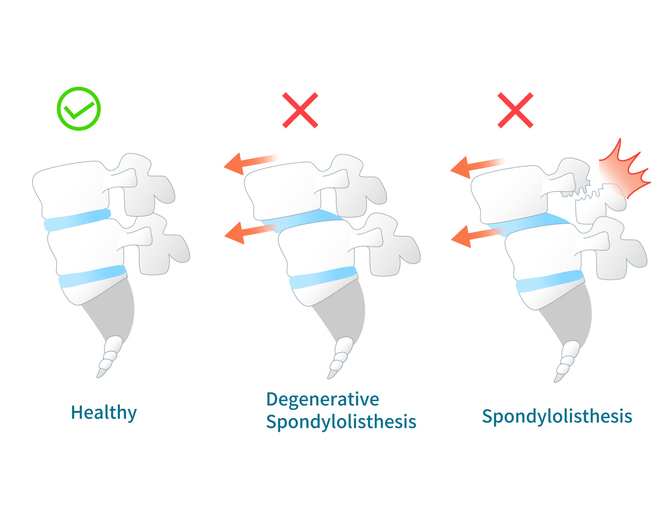Pain
What Is Spondylolisthesis?

Spondylolisthesis is a medical condition that primarily affects the lower back (lumbar spine); however, it can also occur in the mid to upper back (thoracic spine) or neck (cervical spine). The body has 33 stacked vertebrae that form the foundation of the spine. Spondylolisthesis occurs when a vertebra slips forward (anterolisthesis) or backward (retrolisthesis) onto the vertebra underneath it, which may lead to nerve compression.
What are the symptoms of spondylolisthesis?
Many individuals with spondylolisthesis don’t even know they have it because they don’t experience any symptoms. However, when symptoms are present, the most prominent one is persistent lower back pain, especially after exercise. Oftentimes, people mistake this pain for muscle strain. Other symptoms of spondylolisthesis include, but are not limited to, the following:
- Lower back tenderness or stiffness
- Muscle spasms or tight hamstrings
- Pain or tightness in the legs or buttocks (especially when standing)
- Numbness, weakness or tingling in the legs (if nerves are compressed)
- Difficulty controlling bladder or bowel function (if nerves are compressed)
What are the causes/risk factors of spondylolisthesis?
Spondylolisthesis is divided into two main categories based on the cause of the condition: developmental and acquired.
- Developmental spondylolisthesis is present at birth or develops during childhood growth spurts. A family history of back conditions increases the risk of spondylolisthesis.
- Acquired spondylolisthesis develops from spinal degeneration (advancing age), trauma (car accident, fall, etc.), physical stress (e.g., weightlifting, gymnastics, football, etc.) or tumor.














